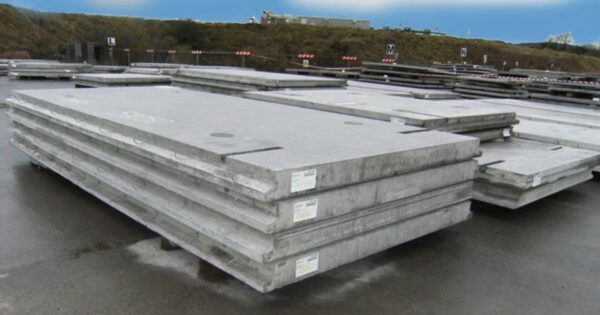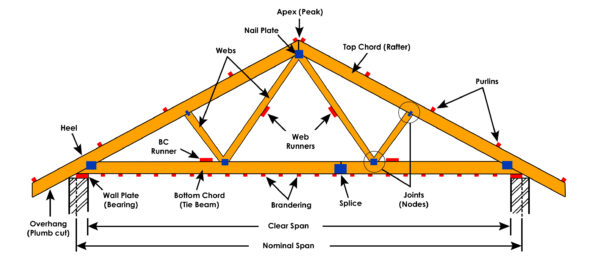The project life cycle represents the various stages involved in constructing infrastructure and buildings. Understanding the project life cycle is key for civil engineers to deliver projects on time and budget. This guide examines the major phases of a construction project life cycle.
Stages of the Construction Project Life Cycle
The project life cycle for construction is typically broken down into four or five phases:
Initiation
The initiation phase kicks off the project by defining its objectives, scope, stakeholders, costs and identifying risks. Key activities include:
- Conducting feasibility studies
- Creating the project charter
- Securing financing
- Completing preliminary zoning and permitting
- Outlining project requirements
- Detailing the scope of work
- Defining milestones
Careful planning during project initiation sets the stage for success. It also prevents scope creep down the line.
Planning and Design
In-depth planning and design is done during this phase. The core activities involve:
- Finalizing project plans and specifications
- Selecting materials, systems and equipment
- Creating blueprints, architectural and engineering drawings
- Identifying construction methods
- Obtaining all necessary permits
- Defining a project schedule with milestones
- Estimating costs and creating budgets
- Minimizing risks
- Procuring necessary contractors and vendors
Thorough planning is vital to avoid surprises and delays during construction. It also optimizes budgeting.
Execution
The execution phase is when construction takes place based on the project plans and schedule. Key activities involve:
- Site preparation and mobilization
- Constructing facilities and infrastructure
- Installing equipment and systems
- Coordinating contractors and managing the schedule
- Inspecting work and conducting testing
- Providing project updates and financials
- Change management and issue resolution
- Managing health and safety compliance
Proper project monitoring and adjusting is crucial during execution to deliver the project on time, within budget and safely.
Monitoring and Controlling
During project execution, constant monitoring, controlling and adjusting is necessary, including:
- Tracking progress against the schedule and budget
- Monitoring quality against specifications
- Managing changes and resolving issues
- Updating project plans as needed
- Mitigating risks and troubleshooting problems
- Managing contractors and vendors
- Ensuring safety adherence
- Providing progress reports to stakeholders
Vigilant monitoring allows successful delivery by identifying deviations early for quick correction.
Commissioning and Closeout
During this final phase, the project is completed and handed over, which involves:
- Inspecting and testing all deliverables
- Completing punch lists and fixing deficiencies
- Training end users on operations
- Obtaining occupancy certificates and liens releases
- Settling final payments and closing contracts
- Documenting project results and turning over deliverables
- Capturing lessons learned for future projects
- Celebrating project completion!
Thorough completion and documentation ensures smooth transition to the owner and operations team.
Project Life Cycle in Civil Engineering
Civil engineering projects have unique features that impact their life cycle, including:
- Dealing with private and government stakeholders
- Requirements for zoning, permits, and regulations
- Coordinating numerous contractors and vendors
- Impacts of weather on outdoor construction
- High capital costs and financing challenges
- Likelihood of design changes during execution
- Complex testing and commissioning requirements
- Extensive health, safety and environmental considerations
Experienced project managers are essential to navigate the challenges of infrastructure project life cycles.
Project Management Life Cycle Phases
While terminology differs, most project management life cycles contain these core phases:
The project life cycle refers to the four main phases of any project
- Initiation – Initiation involves defining the project requirements, scope, objectives, costs, risks etc. and securing initial approvals.
- Planning – Planning entails creating detailed project plans, timelines, budgets, resource needs, communication strategies etc.
- Execution – construction and implementation stage where the actual work is performed based on the project plans.
- Monitoring and Controlling -Ongoing monitoring and control activities happen during execution to track progress, costs, changes, issues etc.
- Closing – Closure wraps up the project, completes any punch list items, documents results, gathers feedback, and transfers completed deliverables.
- The project life cycle provides a structured approach to delivering projects on time and budget.
- Adjustments can be made within phases in an agile manner to manage changes in dynamic projects.
- Project management software tools often align to these project life cycle phases for scheduling, costing, reporting etc.
- Understanding the standard life cycle leads to more effective project planning, execution and wrap-up.
- The project life cycle gives the entire team visibility into the status at each phase.
- Proper management of each life cycle phase is crucial for overall project success.

Initiation Phase of a Construction Project
Proper project initiation is crucial. Key steps include:
- Validating the project rationale and objectives
- Defining project scope and criteria for success
- Researching requirements like permits and regulations
- Identifying high-level budget estimates and availability of funds
- Outlining resources needed to deliver the project
- Detailing long lead items and equipment
- Developing a business case and financial justification
- Getting buy-in from project sponsors and key stakeholders
- Appointing the project manager and team
Skipping important initiation steps often causes problems later on. Investing time upfront pays off.
Planning Phase of a Construction Project
In-depth planning is vital for minimizing costly surprises. Key planning activities include:
- Finalizing project design and engineering
- Creating detailed plans, specifications and drawings
- Identifying construction methods, materials and systems
- Defining quality metrics and validation testing
- Developing an execution schedule with all activities
- Estimating costs and creating a detailed budget
- Evaluating and choosing contractors and vendors
- Modeling and mitigating risks
- Planning for health, safety and environmental factors
- Determining resource requirements for project personnel
- Outlining project communications and reporting
Thorough planning sets the roadmap for efficient execution. Planning should involve the entire project team.
Execution Phase of a Construction Project
The execution phase involves turning plans into reality via construction. Key activities include:
- Mobilizing equipment, materials and contractors to site
- Securing necessary inspections and permits
- Building structures, facilities and infrastructure
- Installing equipment and systems
- Managing contractors against the schedule and budget
- Providing regular progress updates to stakeholders
- Conducting quality assurance inspections and testing
- Identifying change orders and new issues for resolution
- Adjusting plans as needed while minimizing scope creep
- Maintaining health and safety protections on site
Proactive monitoring and communication ensures successful on-time delivery during construction.
Monitoring and Controlling Construction Projects
Keeping projects on track requires constant monitoring and control:
- Tracking all completion progress against the schedule
- Ensuring construction quality meets specifications
- Driving contractors to complete milestones on time
- Tracking actual costs against the budget
- Identifying risks and employing mitigation strategies
- Managing changes through disciplined change control
- Enforcing health and safety through daily inspections
- Providing routine progress reports to stakeholders
- Updating plans when necessary while limiting scope creep
Diligent monitoring enables issues to be caught early and promptly addressed.
Closing and Commissioning Construction Projects
Proper closeout and commissioning ensures the owner gets a quality product:
- Verifying all contract deliverables are complete
- Punch lists to fix any construction deficiencies
- Inspecting infrastructure and assets
- Testing functionality and performance to specifications
- Training operations and maintenance personnel
- Transferring all asset documentation to owner
- Obtaining occupancy permits and regulatory signoffs
- Settling final payments and releasing project liens
- Obtaining acceptance of deliverables from stakeholders
- Reviewing project performance and capturing lessons
Thorough completion sets up operations success and paves the way for future projects.
Project Life Cycle in the Construction Industry
The construction industry relies heavily on disciplined project life cycle management to deliver complex infrastructure projects. Best practices include:
- Investing significantly in project planning upfront
- Incorporating safety and regulations into design
- Using detailed scheduling and cost control
- Implementing rigorous quality assurance procedures
- Testing rigorously prior to commissioning
- Managing changes through mature change control processes
- Monitoring subcontractor performance closely
- Using project management software and tools
- Capturing and sharing lessons across projects
Following project management principles is crucial for construction firms to consistently deliver quality projects safely, profitably and efficiently.
Project Life Cycle in Building Construction
Buildings follow a similar project life cycle as infrastructure projects:
- Initiation – Assess needs, land, zoning, costs
- Planning – Architectural design, materials selection, budgets
- Execution – Construct foundation, structural, interior/exterior
- Monitoring – Manage trades against schedule and budget
- Closeout – Inspections, punchlist, turnover to owner
Extra considerations for buildings include architectural aesthetics, occupancy/foot traffic flow, and MEP systems.
In summary, managing construction projects according to a disciplined life cycle ensures efficient delivery of infrastructure and buildings. Upfront planning and constant progress oversight provide keys to success. Mastering project life cycles allows civil engineers to consistently deliver value for owners and society.







